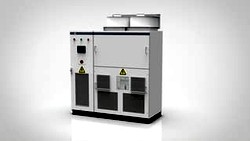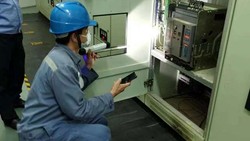Digital transformation has revolutionized various industries, and the power sector is no exception. One of the latest advancements in this industry is the emergence of digital twins. Digital twins are virtual replicas of physical assets or systems that allow for real-time monitoring, analysis, and optimization. They represent the logical evolution of network models, taking the sector to new heights of efficiency and effectiveness.
In this article, we will explore the concept of digital twins in power generation, transmission and distribution, their benefits, and their impact on the industry.
Understanding Digital Twins
What are digital twins?
Digital twins are virtual representations of physical assets, systems, or processes. They are created by combining data from various sources, such as sensors, IoT devices, and historical data. These virtual replicas enable real-time monitoring, analysis, and simulation of the physical counterpart, providing valuable insights and opportunities for optimization.
How do digital twins work?
Digital twins work by collecting and processing data from sensors and other data sources connected to the physical asset. This data is then used to create a virtual model that mirrors the behaviour and characteristics of the physical asset. The virtual model can be continuously updated with real-time data, allowing for accurate monitoring, analysis, and prediction.

(symbol image, credit CLOU/Clipdrop)
Applications of Digital Twins in Power Generation and Distribution
Enhancing Asset Performance
One of the key advantages of digital twins in the power sector is the ability to enhance asset performance. By creating virtual models of power plants, transmission lines, and substations, operators can gain deep insights into asset behaviour. Real-time data from sensors embedded within the physical assets are fed into the digital twin, enabling operators to monitor parameters such as temperature, vibration, and energy consumption. With this information, operators can identify potential issues, optimize asset settings, and improve overall performance. Proactive maintenance can be scheduled based on the digital twin's analysis, minimizing downtime and extending equipment lifespan.
Enabling Predictive Maintenance
Digital twins play an important role in enabling predictive maintenance strategies. By continuously monitoring data from sensors embedded within physical assets, the digital twin can identify patterns, anomalies, and potential failures. Advanced analytics algorithms can analyse the data and provide insights into the asset's health. By predicting impending failures, operators can schedule maintenance activities during planned downtime or off-peak hours, minimizing disruption to end consumers. Predictive maintenance supported by digital twins reduces costs, extends asset lifespan, and enhances overall system reliability.
Grid Optimization
Digital twins offer significant potential for optimizing the power grid. By creating virtual replicas of power generation facilities and integrating real-time data, operators can simulate and optimize the operation of these assets. Factors such as weather conditions, demand patterns, and equipment efficiency can be considered to make informed decisions on energy generation and distribution. By analysing the data within the digital twin, operators can maximize energy output, reduce losses, and improve stability within the power grid. Furthermore, digital twins facilitate the integration of renewable energy sources into the grid by providing insights into their impact on the overall system.
Grid resilience and load management
Digital twins contribute to grid resilience by predicting and managing load fluctuations. By analysing real-time data from sensors and historical patterns, digital twins can optimize load balancing, prevent overloads, and ensure a stable power supply. They also enable operators to simulate and test different scenarios to evaluate the resilience of the grid under various conditions.
Supporting Grid Planning and Expansion
Digital twins provide invaluable support when planning new power generation or transmission projects. By simulating different scenarios within the digital twin, operators can assess the impact on the grid and make informed decisions on capacity expansion, network upgrades, and infrastructure investments. This enables optimized resource allocation and reduces the risk of costly errors. Digital twins can simulate the behaviour of the existing grid, assess the impact of new assets, and identify potential bottlenecks or areas requiring reinforcement. This proactive approach ensures that grid planning and expansion are carried out efficiently and effectively.
Facilitating Remote Monitoring and Control
Digital twins play a crucial role in enabling predictive maintenance strategies. By continuously monitoring data from sensors embedded within physical assets, the digital twin can identify patterns, anomalies, and potential failures. Advanced analytics algorithms can analyse the data and provide insights into the asset's health. By predicting impending failures, operators can schedule maintenance activities during planned downtime or off-peak hours, minimizing disruption to end consumers. Predictive maintenance supported by digital twins reduces costs, extends asset lifespan, and enhances overall system reliability.
Challenges and Future Outlook
Challenges in implementing digital twins in power generation and distribution
Implementing digital twins in the power generation and distribution sector comes with its own set of challenges. One major challenge is the integration of data from various sources, as different assets and systems may use different protocols and formats. Ensuring data security and privacy is another critical challenge, as digital twins rely on sensitive operational data. Additionally, the cost of implementing and maintaining digital twins can be significant, requiring investment in infrastructure, data analytics tools, and skilled personnel.
Future outlook for digital twins in power generation and distribution
The future of digital twins in power generation and distribution looks promising. As technology continues to advance, digital twins will become more sophisticated, capable of simulating complex scenarios and optimizing energy systems at a granular level. Integration with artificial intelligence and machine learning algorithms will further enhance the capabilities of digital twins, enabling autonomous decision-making and predictive maintenance. With increased adoption and advancements, digital twins will play a crucial role in transforming the power grid sector.
Best Practices in Implementing Digital Twins
When implementing digital twins in power generation and distribution, there are several best practices that can ensure successful integration and maximize the benefits:
- Comprehensive Data Integration
To create an accurate and reliable digital twin, it is crucial to integrate data from various sources such as sensors, control systems, and enterprise systems. This comprehensive data integration ensures that the digital twin reflects the real-time behaviour of the physical assets effectively. - Scalable and Secure Infrastructure
Implementing a robust and scalable infrastructure is essential to handle the vast amount of data generated by the digital twin. It is crucial to invest in secure and reliable cloud-based platforms or on-premises solutions that can handle the computational and storage requirements while maintaining data privacy and security. - Advanced Analytics and Machine Learning
Leveraging advanced analytics and machine learning algorithms is key to unlocking the full potential of digital twins. These technologies enable operators to gain actionable insights from the vast amount of data collected by the digital twin, enabling predictive maintenance, optimization, and decision-making. - Collaborative Approach
Implementing digital twins requires collaboration between various stakeholders, including power plant operators, grid operators, equipment manufacturers, and software providers. A collaborative approach ensures that the digital twin incorporates diverse perspectives, expertise, and data sources, resulting in a more comprehensive and accurate representation of the physical assets. - Continuous Monitoring and Iterative Improvements
Digital twins should be continuously monitored and updated to reflect any changes or improvements in the physical assets. Regular feedback loops, data validation, and calibration processes should be established to ensure the accuracy and reliability of the digital twin over time. - Training and Skill Development
To fully harness the benefits of digital twins, operators and engineers need to be trained in the utilization of the technology. Providing adequate training and skill development opportunities ensures that the workforce is equipped with the knowledge and capabilities to effectively use digital twins for asset management, predictive maintenance, and system optimization.
By following these best practices, power generation, transmission- and distribution companies can successfully implement digital twins, unlocking their full potential to enhance asset performance, enable predictive maintenance, and optimize the overall energy system.
Takeaway
Digital twins have emerged as a powerful tool in the power generation and distribution sector, enabling real-time monitoring, analysis, and optimization of assets and systems. They offer numerous benefits, including proactive maintenance, energy optimization, risk assessment, and grid resilience. While there are challenges in implementing and maintaining digital twins, the future outlook for this technology is promising. As industry leaders continue to embrace digital twins and advancements in technology unfold, the power generation, transmission- and distribution sector will witness significant improvements in efficiency, reliability, and safety.
The concept of digital twins relies heavily on reliable data acquisition. If you are interested in exploring our data acquisition solutions to support your distribution- or digital twin implementation, please don't hesitate to contact us. Our team of experts is ready to provide the necessary support and assistance you need.
Editor's note: This article was originally published in September 2023 and has been updated for comprehensiveness.





All comments are moderated before being published. Inappropriate or off-topic comments may not be approved.